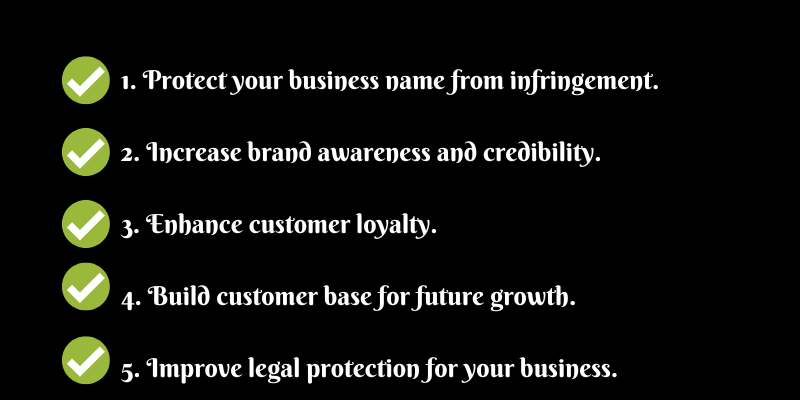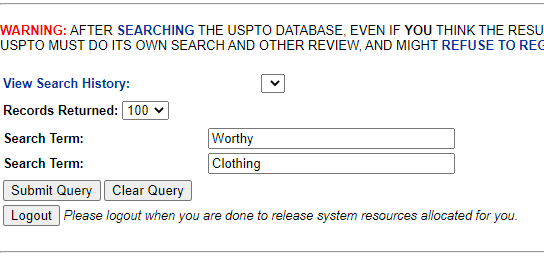Last Updated on 14 February 2025 by Mubashir Rafique
In this article, we will learn how to trademark a business name. If you want to know the exact process, keep reading.
In today’s economy, it is more important than ever to trademark your business name. A good business name can help you attract new customers and build brand awareness.
However, if your business name is not properly trademarked, you may be at risk of losing your name and potentially your business.
Introduction to Trademarks and How They Work
Trademarks are a type of intellectual property that protects a word, phrase, logo, or design that is unique to a company or individual. The law of trademarks allows a company to prevent others from using the same name, symbol, or design to sell products in a competitive market.
When a company registers a trademark, it can use that mark to stop others from using similar marks in an attempt to monopolize the market.
In order to trademark a name, a company must demonstrate that the name is distinctive, and has been used by others in a commercial setting.
If a company believes that another company is using its trademark without permission, it can file a lawsuit to stop the infringement.
Suppose a company wins a lawsuit against another company using its trademark. In that case, the court may order the other company to stop using the trademark, pay damages, or change the name or logo.

When should you trademark?
When you first create your business, you should trademark your name. This will make it more difficult for others to use your name without your permission.
Differences between trademark, copyright, and patent
Trademarks, copyright, and patent are all types of intellectual property.
Trademark: a word, phrase, symbol, or design that identifies the source of goods or services
Copyright: the exclusive right to produce, reproduce, perform, display, distribute and sell copies of a work
Patent: a legal right granted by the government to an inventor or author for a limited period of time for the exclusive purpose of protecting an invention or a new method of making an invention
What can you trademark?
You can trademark any word, phrase, symbol, or design.
How to Do A “Trademark Search” And Look Up Existing Trademarks
To do a trademark search, you will need to go to the USPTO website and sign up for a trademark search. You will then be able to do a search for existing trademarks.
The Trademark Database is a searchable database of registered and pending trademarks.
You can use the Trademark Database to find the name of the owner of a trademark, the trademark’s serial number, and the date the trademark was registered.
Also, as the status of the trademark, and the filing date of the trademark application.
Here is an example of an already trademarked business name.
I went to the USPTO website and fill in the word “Worthy” assuming it’s a business name I am choosing for a new clothing line.

I filled in the 4 available options. Submit the query and you will find out all the business names that are already trademarked with the word you have put in.
In my case, there are 66 clothing brands including the word “worthy” in their trademarked name.

Searching your business name in the already trademarked business name is the first step in trademarking your business name.
How to Trademark a Business Name
To trademark a business name, you will first need to file an application with the United States Patent and Trademark Office (USPTO). The USPTO is a government agency that is responsible for registering and protecting intellectual property (i.e. trademarks, copyrights, and patents).
Once you have filed your application, the USPTO will review it to determine if the name is eligible for trademark protection.
If the name is eligible, the USPTO will issue you a trademark registration.
Once you have a trademark registration, you can use the name in connection with your business without fear of infringement.
However, you will still need to take precautions to avoid confusion with other businesses. For example, you should make sure your business name is prominently displayed on your website and in all marketing materials.
In short:
-
- Register your business name with the USPTO.
- Upload your business name registration application
- Pay the filing fee.
- Submit all required documents.
- Wait for the USPTO to approve your business name.
You can consult an attorney if you have difficulty choosing a business name. An attorney can help you identify eligible names and provide you with advice on how to protect your trademark.
FAQs on Trademarking A Business Name
Here are some most asked questions.
What are the costs of trademarking your business name?
Filing a trademark for your business name with the U.S. Patent and Trademark Office (USPTO) will cost between $225 and $600, plus legal fees.
What are some potential obstacles to trademarking your business name?
There are many potential obstacles to trademarking your business name. The most common obstacles are:
- Your business name is too common.
- Your business name is too descriptive.
- Your business name is likely to cause confusion among consumers.
- Your business name is not distinctive enough.
- Your business name is too generic.
How long does it take to trademark a business name?
It can take anywhere from 12-18 months to trademark a business name.
What should you do if you believe someone is using your business name without permission?
If you believe someone is using your business name without permission, you can file a trademark infringement complaint with the United States Patent and Trademark Office (USPTO).
The USPTO will review the complaint and may take appropriate action, including issuing a cease and desist order.
The Benefits of Trademarking Your Business Name
When you start your own business, it’s important to protect your trademarks. Here are some benefits of trademarking your business name:
1. Protect your business name from infringement.
If someone starts using your business name without your permission, trademark law can help you protect your intellectual property. You can sue the person who is using your name, and you can get a court order preventing them from doing business under that name.
2. Increase your brand recognition.
If you trademark your business name, other people will know that you own the name and are authorized to use it.
This will increase your brand recognition, which can help you attract new customers and increase profits.
3. Keep your business name exclusive.
If your business name is trademarked, other businesses will be unable to use that name without your permission.
4. Avoid confusion among customers.
If your business name is similar to a well-known trademark, customers may be confused about which company they are buying from. This can lead to lost sales and decreased profits.
5. Protect your business reputation.
If your business name is associated with negative publicity, trademark law can help you protect your reputation. You can sue the person or company responsible for the negative publicity, and you can get a court order preventing them from using your name in the future.
By trademarking your business name, you can protect your intellectual property and increase your brand recognition.
How to Maintain Your Trademark after Registration So You Don’t Lose It
If you have a trademark, you want to make sure you maintain it after registering it. Here are a few tips to help you do that:
1. Use Your Trademark Properly
Make sure you are using your trademark correctly. You should only use your trademark with the goods or services you are offering.
If you are using your trademark in a way that is not related to your business, you may be infringing on someone else’s trademark.
2. Keep Your Trademark Logs Up-to-Date
Make sure you keep track of all the times you are using your trademark. This will help you track down any infringements.
You should also keep track of any changes to your trademark. If your trademark is registered with the US Patent and Trademark Office (USPTO), you will need to file a trademark application to update the registration.
3. Register Your Trademark Protectively
You should register your trademark protectively to ensure that you can stop anyone from infringing on your trademark. You can register your trademark with the USPTO or with a similar government agency in your country.
4. Monitor Your Trademark Rights
Keep an eye on any infringement actions that are taken against your trademark. You can use legal action to stop the infringement or to recover damages.
5. Use a Trademark Attorney
If you have questions about your trademark or if someone is infringing on your trademark, you should consider using a trademark attorney.
A trademark attorney will be able to help you protect your trademark and take any necessary legal action if necessary.
Conclusion
Trademarking your business name is essential for new businesses. Get it done as soon as possible.
Now that you have heard all from us, it’s your turn. Let us know your queries in the comment section.
